Key Highlights
- 171 million people lifted from extreme poverty (living on less than $2.15/day) between 2011-12 and 2022-23, with poverty rate declining from 16.2% to 2.3%
- Multidimensional poverty reduced from 24.85% (2015-16) to 14.96% (2019-21), with 24.82 crore people escaping poverty during 2013-14 to 2022-23
- Rural-urban poverty gap narrowed significantly, with rural extreme poverty falling from 18.4% to 2.8% and urban from 10.7% to 1.1%
- Five major states (Uttar Pradesh, Maharashtra, Bihar, West Bengal, Madhya Pradesh) accounted for 65% of extreme poor in 2011-12 and contributed to two-thirds of poverty reduction
- Kerala achieved the lowest multidimensional poverty rate at 0.55%, becoming India’s first state to declare freedom from extreme poverty in November 2025
Breaking the Chains of Deprivation
India has achieved one of the most remarkable poverty reduction success stories in modern global history. According to the World Bank’s Spring 2025 Poverty and Equity Brief, the country has lifted 171 million people out of extreme poverty between 2011-12 and 2022-23, reducing the extreme poverty rate from 16.2% to just 2.3%. This extraordinary transformation reflects not just economic growth, but a fundamental shift in governance approach—prioritizing inclusive development, targeted welfare schemes, and digital innovation to ensure benefits reach the last mile. ddnews.gov
The journey from widespread deprivation to near-elimination of extreme poverty represents a testament to systematic policy interventions, enhanced financial inclusion, and a commitment to leaving no one behind. However, deeply-rooted challenges remain in areas of identification, measurement, regional disparity, and sustainable policy outcomes. For UPSC aspirants and policymakers alike, understanding this multifaceted poverty landscape is critical for comprehensive analysis and informed decision-making.
Defining Extreme Poverty: International and National Approaches
Understanding poverty requires clarity on measurement frameworks, as different definitions yield vastly different estimates.
International Benchmarks
The World Bank defines extreme poverty as living on less than $2.15 per day in 2017 Purchasing Power Parity (PPP) terms. In June 2025, the World Bank updated this threshold to $3.00 per day based on 2021 PPP, which raised India’s extreme poverty estimate to 5.3% for 2022-23. This upward revision reflects updated cost-of-living calculations rather than worsening conditions. worldbank
For lower-middle-income countries (LMIC), the World Bank uses a higher threshold of $3.65 per day (updated to $4.20 in 2025). At this level, India’s poverty rate fell from 61.8% in 2011-12 to 28.1% in 2022-23, lifting 378 million people out of poverty.
India’s Multidimensional Poverty Index
India’s Multidimensional Poverty Index (MPI), developed by NITI Aayog using the Alkire-Foster methodology, offers a broader perspective beyond income alone. The national MPI considers three dimensions across 12 indicators: iipa
- Health: Nutrition, child and adolescent mortality
- Education: Years of schooling, school attendance
- Standard of Living: Cooking fuel, sanitation, drinking water, electricity, housing, assets
This comprehensive approach recognizes that poverty is not merely about inadequate income but multiple simultaneous deprivations affecting quality of life. The MPI headcount ratio declined from 55.34% in 2005-06 to 14.96% in 2019-21, demonstrating remarkable progress across all three dimensions. niti.gov
For governance analysis and UPSC preparation, understanding both monetary and non-monetary poverty measures is critical. While income-based measures track consumption levels, MPI captures the lived reality of deprivation—making it particularly relevant for policy design and targeting.
Current Status: Key Statistics and Trends
Extreme Poverty Reduction
India’s extreme poverty rate at the $2.15/day threshold stands at 2.3% as of 2022-23, down from 16.2% in 2011-12. This translates to approximately 33.66 million people still living in extreme poverty, compared to 205.93 million a decade ago. At the updated $3/day line, the rate is 5.3%, representing about 75.24 million people, down from 344.47 million in 2011-12.
The pace of poverty reduction has been remarkable—India achieved an average annual decline of 16% in the rural-urban poverty gap between 2011-12 and 2022-23. This accelerated progress stands in stark contrast to the slower gains of previous decades, indicating that recent policy interventions have been particularly effective.
Rural vs. Urban Poverty
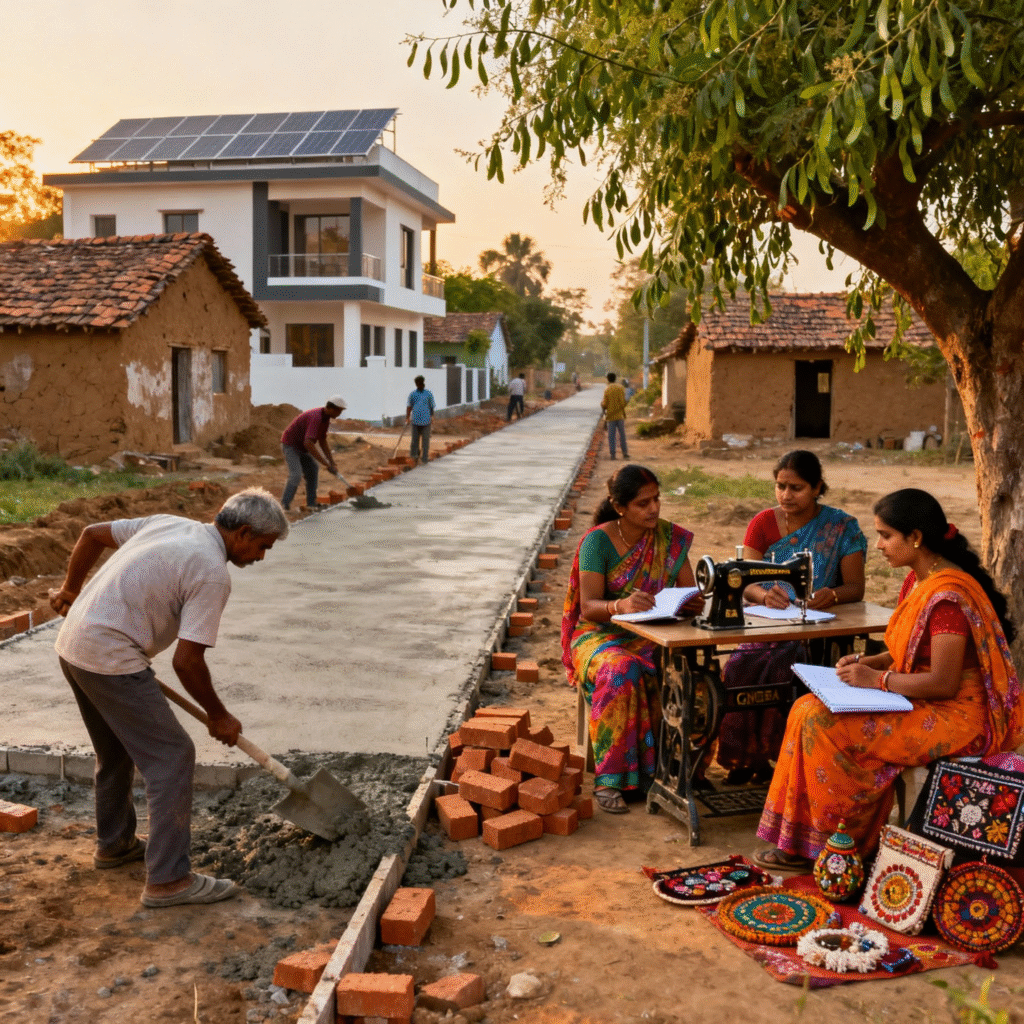
The narrowing gap between rural and urban poverty represents a significant achievement. Rural extreme poverty fell from 18.4% to 2.8%, while urban extreme poverty declined from 10.7% to 1.1%. The rural-urban gap contracted from 7.7 percentage points to just 1.7 percentage points—a 16% annual reduction.
At the LMIC threshold ($3.65/day), rural poverty decreased from 69% to 32.5%, and urban poverty from 43.5% to 17.2%. The rural-urban disparity at this level reduced from 25 to 15 percentage points, representing a 7% annual decline.
This convergence reflects improved rural infrastructure, enhanced employment opportunities through schemes like MGNREGA, and better access to markets and services in previously underserved areas.
State-Level Progress
Five states—Uttar Pradesh, Maharashtra, Bihar, West Bengal, and Madhya Pradesh—represented 65% of India’s extreme poor in 2011-12 but contributed to two-thirds of the overall poverty reduction by 2022-23.
In terms of absolute numbers escaping multidimensional poverty between 2013-14 and 2022-23:
- Uttar Pradesh: 5.94 crore people
- Bihar: 3.77 crore people
- Madhya Pradesh: 2.30 crore people
- Rajasthan: 1.87 crore people
Meanwhile, Bihar (33.76%), Jharkhand (28.81%), Uttar Pradesh, and Madhya Pradesh continue to report the highest multidimensional poverty rates, though all have shown steep declines. pib.gov
Kerala’s Success Story
Kerala stands out with the lowest multidimensional poverty rate at 0.55%. In November 2025, Chief Minister Pinarayi Vijayan declared Kerala as India’s first state free from extreme poverty—a historic achievement. The state’s Extreme Poverty Eradication Project (EPEP) identified 64,006 families (103,099 individuals) living in extreme poverty and created customized micro-plans for each family, addressing food security, health, income, and housing.
Causes and Determinants of Poverty
Historical Barriers
India’s poverty has deep historical roots in unequal wealth distribution, social exclusion based on caste, gender, and tribal identity, chronic unemployment, illiteracy, and inadequate access to health and education services. These structural barriers created intergenerational poverty traps where the poor lacked resources to invest in human capital development.
Social exclusion remains particularly acute for Scheduled Castes (SCs), Scheduled Tribes (STs), and minorities. Research shows STs are the most disadvantaged subgroup with a multidimensional poverty headcount of 44.4% and intensity of 48.6%, followed by SCs. These communities face compound deprivations across health, education, and living standards.
Regional Disparities
The BIMARU states (Bihar, Madhya Pradesh, Rajasthan, Uttar Pradesh) historically lagged in development indicators and continue to report higher poverty rates. However, their recent rapid poverty reduction suggests that targeted interventions can accelerate progress even in traditionally disadvantaged regions.
Geographical and climatic factors also influence poverty distribution. Districts experiencing climate shocks, temperature anomalies, and extreme rainfall show higher multidimensional poverty. A study found that a 1°C rise in temperature correlates with a 1.16-1.21% increase in poverty rates across Indian districts.
COVID-19 Impact
The COVID-19 pandemic temporarily reversed poverty gains for marginalized communities, especially casual laborers, migrant workers, and the self-employed. The nationwide lockdown, while necessary for public health, devastated livelihoods for those in the informal sector who lacked social security benefits.
Studies predicted an increase of 75 million poor due to the COVID-19 induced economic crisis, accounting for 60% of the global increase in poverty. Urban households were particularly affected, with approximately 19% of individuals who were not poor pre-COVID qualifying as poor during the pandemic period.
However, government relief measures—including the Pradhan Mantri Garib Kalyan Anna Yojana providing free food grains to over 800 million people—helped mitigate the worst impacts.
Government Interventions: Schemes and Policies
India’s poverty reduction success stems from a multipronged approach combining employment generation, financial inclusion, social security, and asset creation.
Mahatma Gandhi National Rural Employment Guarantee Act (MGNREGA)
Launched in 2005, MGNREGA guarantees 100 days of wage employment annually to every rural household willing to do unskilled manual work. The scheme has been instrumental in:
- Providing income support during agricultural lean seasons
- Creating durable rural assets like water conservation structures, roads, and irrigation facilities
- Empowering women (significant female participation)
- Reducing rural poverty by up to one-third in implementing districts
MGNREGA acts as a critical safety net during economic shocks and agricultural distress, preventing households from falling into deeper poverty.
Pradhan Mantri Jan Dhan Yojana (PMJDY)
Launched in 2014, PMJDY aimed to ensure financial inclusion by providing access to banking services for the underprivileged. As of recent estimates, over 550 million bank accounts have been opened under this scheme, enabling:
- Direct Benefit Transfers (DBT) to reach beneficiaries without intermediaries
- Access to credit, insurance, and pension services
- Women’s economic empowerment through control over their own accounts
PMJDY forms a critical pillar of the JAM trinity (Jan Dhan-Aadhaar-Mobile), which revolutionized India’s welfare delivery system.
Direct Benefit Transfer (DBT) and Aadhaar
The DBT system, integrated with Aadhaar biometric identification, has saved ₹3.48 lakh crore cumulatively by eliminating ghost beneficiaries and reducing leakages. The system ensures:
- Transparent, direct transfer of subsidies to beneficiaries’ bank accounts
- Elimination of intermediaries and corruption
- Real-time tracking and accountability
The Welfare Efficiency Index rose from 0.32 in 2014 to 0.91 in 2023, reflecting sharp increases in both effectiveness and inclusion.
Pradhan Mantri Awas Yojana (PMAY)
PMAY aims to provide affordable housing to the urban and rural poor. Under PMAY-Gramin:
- Financial assistance of ₹1.20 lakh in plains and ₹1.30 lakh in hill states/northeastern regions
- 68.58 lakh houses sanctioned to SCs, with 59.06 lakh completed
- Convergence with other schemes for toilets, cooking fuel, and employment support
Housing security prevents families from falling back into poverty by providing a stable foundation for other development activities.
Ayushman Bharat
The world’s largest health insurance scheme provides coverage of ₹5 lakh per family per year for secondary and tertiary care to over 50 crore beneficiaries from 10.74 crore poor families. Ayushman Bharat:
- Prevents 4.6% of India’s population from slipping into poverty annually due to catastrophic health expenses
- Covers all pre-existing diseases with no family size restrictions
- Provides cashless, paperless treatment at empaneled public and private hospitals
By reducing out-of-pocket health expenditure, the scheme protects vulnerable families from medical debt and poverty.
Public Distribution System (PDS) and National Food Security Act (NFSA)
The PDS ensures subsidized food grains reach approximately 800 million beneficiaries under NFSA. Technological improvements through Aadhaar seeding and biometric authentication have reduced leakages, though challenges of exclusion errors persist.
State Innovations: Kerala’s EPEP Model
Kerala’s Extreme Poverty Eradication Programme (EPEP) represents a groundbreaking approach:
- Ground-level survey identified 64,006 families living in extreme poverty using four indicators: food security, health, income, and housing
- Customized micro-plans created for each family addressing specific needs
- Community-led implementation through Kudumbashree women’s self-help groups, ASHA workers, and local governments
- Delivered 5,422 new houses, 5,522 renovated homes, and 28.32 acres of land to 439 families
This model demonstrates how targeted, participatory interventions can address the “invisible poor” who fall through conventional welfare nets.
Critical Evaluation: Successes and Shortcomings
Strengths
- Rapid, Broad-Based Poverty Reduction: India’s poverty reduction aligns with Sustainable Development Goal 1 (No Poverty). The scale—171 million lifted from extreme poverty—represents a historic achievement comparable to China’s poverty reduction efforts.
- Improved Targeting Through Technology: The JAM trinity and DBT have revolutionized welfare delivery, ensuring benefits reach intended recipients with minimal leakage. This technological infrastructure provides a scalable model recognized globally by the IMF and World Bank.
- Multipronged, Integrated Approach: India’s strategy combines cash transfers, in-kind support (food, housing), employment guarantees, health insurance, and financial inclusion—addressing poverty’s multiple dimensions simultaneously.
- Narrowing Rural-Urban and Interstate Disparities: The accelerated poverty reduction in traditionally lagging states and rural areas indicates that inclusive growth is reaching previously marginalized regions.
Limitations
- Persisting Pockets of Deprivation: Despite overall progress, certain groups—SCs, STs, women, elderly, and disabled—continue to experience disproportionate poverty. Caste-based and gender-based exclusion remains a structural challenge requiring focused interventions.
- Measurement Controversies and Data Gaps:
- The delay of India’s decadal census (last conducted in 2011) has created a data vacuum affecting poverty estimation and welfare targeting. Without updated census data:
- Exclusion and Inclusion Errors: Despite technological improvements, identification challenges persist:
- Shallow Poverty and Vulnerability: Many people just above the poverty line remain vulnerable to falling back into poverty due to health shocks, climate events, or economic crises. Addressing this “shallow poverty” requires sustained social protection.
- Climate Vulnerability: Poor households are disproportionately exposed to climate shocks, floods, and temperature extremes. Climate change could reverse poverty gains, particularly in climate-sensitive agriculture-dependent regions.
- Pandemic Reversal: COVID-19 demonstrated how quickly progress can be undone, with 19% of urban non-poor falling into poverty during the pandemic. This highlights the need for robust social safety nets that can respond to crises.
Lessons for Policy and Decision Making
Data-Driven Targeting and Continuous Monitoring
The success of schemes like Kerala’s EPEP demonstrates the importance of rigorous identification processes using multiple data sources and community knowledge. Real-time monitoring systems enable course corrections and ensure accountability.
However, the census delay undermines this approach. Conducting the delayed census urgently and establishing mechanisms for more frequent data collection (like annual consumption surveys) is critical for evidence-based policymaking.
Regional Policy Designs and Context Adaptation
Kerala’s success cannot be mechanically replicated elsewhere—each state faces unique challenges requiring context-specific interventions. For instance:
- Climate adaptation strategies for vulnerable districts
- Caste-sensitive approaches in states with high SC/ST populations
- Urban poverty programs addressing slum dwellers and informal workers
Strengthening Social Safety Nets
The pandemic exposed gaps in social protection for informal workers, migrants, and the “new poor”. India needs:
- Universal social security extending beyond the formal sector
- Portable benefits allowing migrant workers to access welfare across states
- Crisis-responsive mechanisms that can scale up quickly during shocks
Addressing Structural Inequalities
Poverty reduction requires tackling root causes—caste discrimination, gender inequality, inadequate education, and health access. Reservation policies, affirmative action in education/employment, and targeted programs for marginalized groups remain essential.
Climate-Resilient Development
Given the strong correlation between climate shocks and poverty, integrating climate adaptation into poverty programs is crucial:
- Climate-smart agriculture reducing vulnerability to weather extremes
- Disaster preparedness and early warning systems
- Livelihood diversification away from climate-sensitive agriculture
Forward Path: Way Ahead
Strengthen Real-Time Data Systems
- Conduct delayed census immediately and transition to annual population surveys for continuous monitoring
- Develop integrated MIS linking all welfare schemes for comprehensive beneficiary tracking
- Use satellite data, machine learning, and big data for poverty mapping and targeting
Upscale Social Protection for Vulnerable Groups
- Expand coverage to informal workers, migrants, and the “new poor” exposed by crises
- Introduce universal basic income pilots as safety nets during transitions
- Strengthen MGNREGA with enhanced wages and year-round employment in distressed areas
Accelerate Investment in Human Capital
- Nutrition programs addressing the 46.6 million stunted and 25.5 million wasted children
- Skill development aligning with market demands for sustainable employment
- Universal health coverage building on Ayushman Bharat to prevent medical poverty
Focus on Equitable, Inclusive Growth
- Address climate vulnerability through adaptation programs and insurance schemes
- Close interstate and rural-urban gaps with targeted resource allocation
- Mainstream gender and caste considerations in all poverty programs
Learn from Successful Models
- Scale up Kerala’s EPEP approach with adaptations for other states
- Replicate best practices from states showing rapid poverty reduction
- Strengthen community-based targeting leveraging local knowledge
Enhance Governance and Delivery Mechanisms
- Reduce exclusion errors in Aadhaar-based systems through better grievance redressal
- Improve last-mile delivery ensuring benefits reach the most marginalized
- Strengthen local governments as frontline poverty warriors
Conclusion: Toward a Poverty-Free India
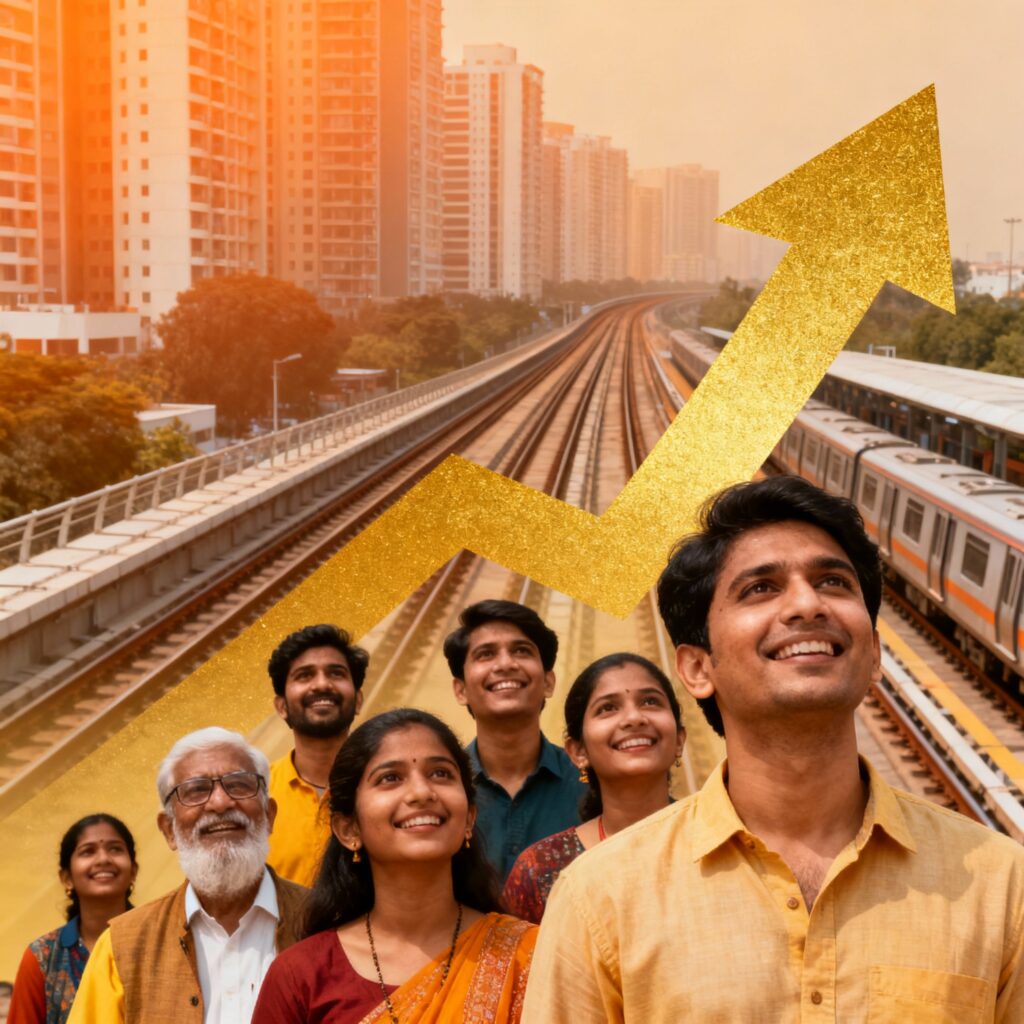
India’s journey from 16.2% to 2.3% extreme poverty represents a monumental achievement—but the work is far from complete. With approximately 33.66 million people still in extreme poverty and many more vulnerable to falling back, sustained commitment is essential.
The success of schemes like MGNREGA, PMJDY, Ayushman Bharat, and innovations like Kerala’s EPEP demonstrates that well-designed, technology-enabled, community-driven interventions can dramatically transform lives. However, challenges of data gaps, climate vulnerability, structural inequalities, and identification errors require continued attention.
As India aspires to become a developed nation by 2047 (Viksit Bharat @2047), eradicating the last vestiges of poverty while ensuring no one falls back must remain a national priority. This requires not just economic growth but inclusive, equitable development that reaches the most marginalized—fulfilling the constitutional promise of social and economic justice.
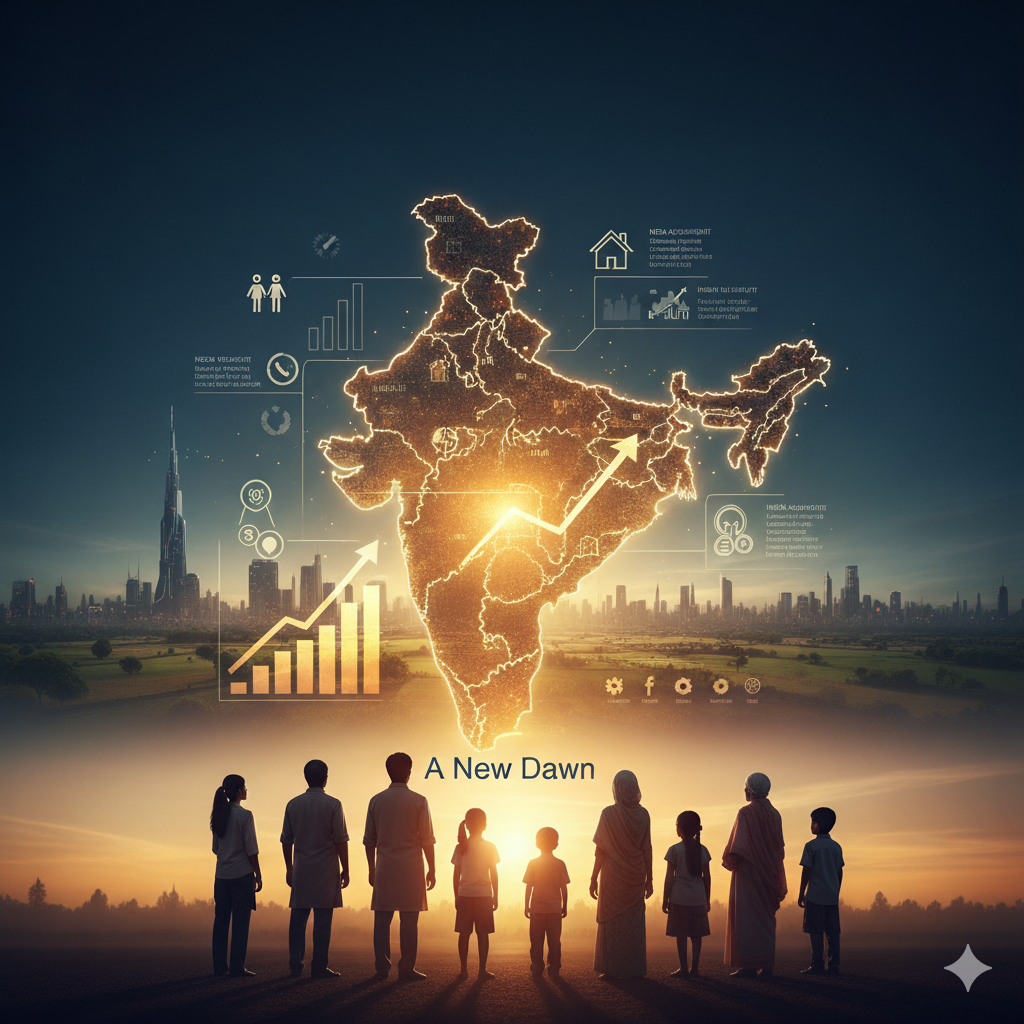
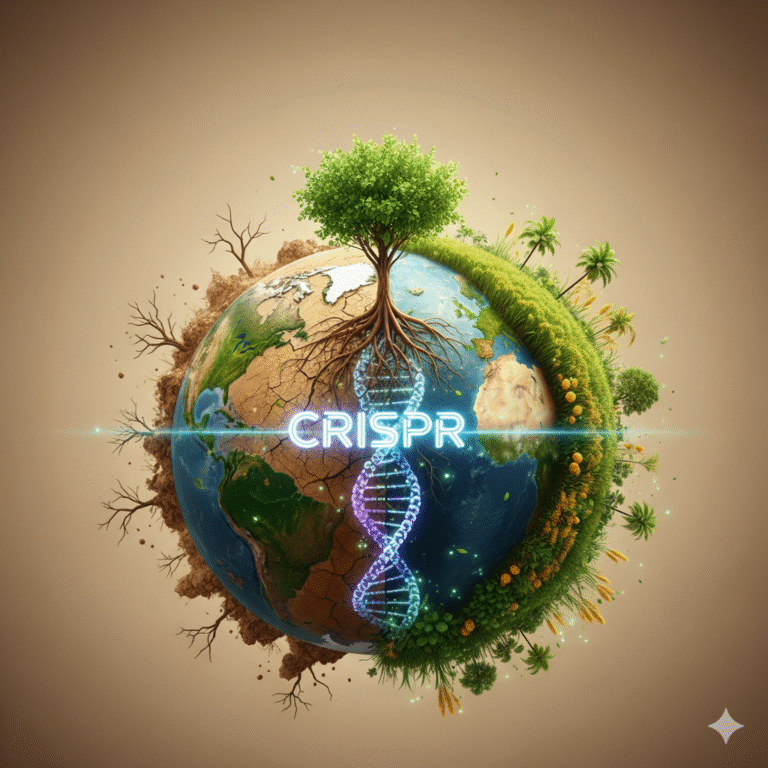
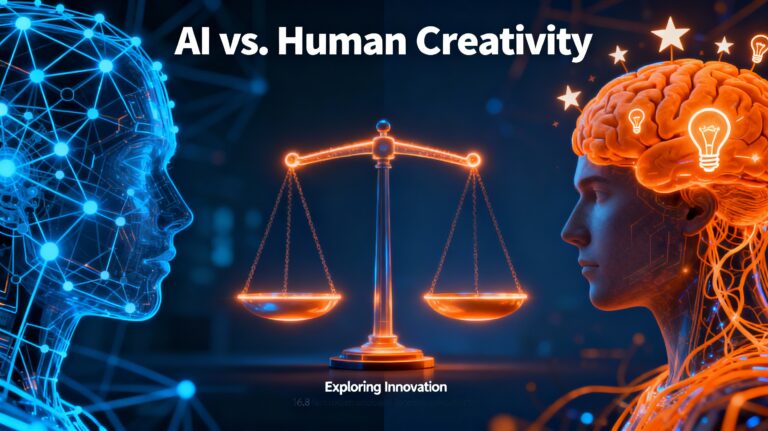






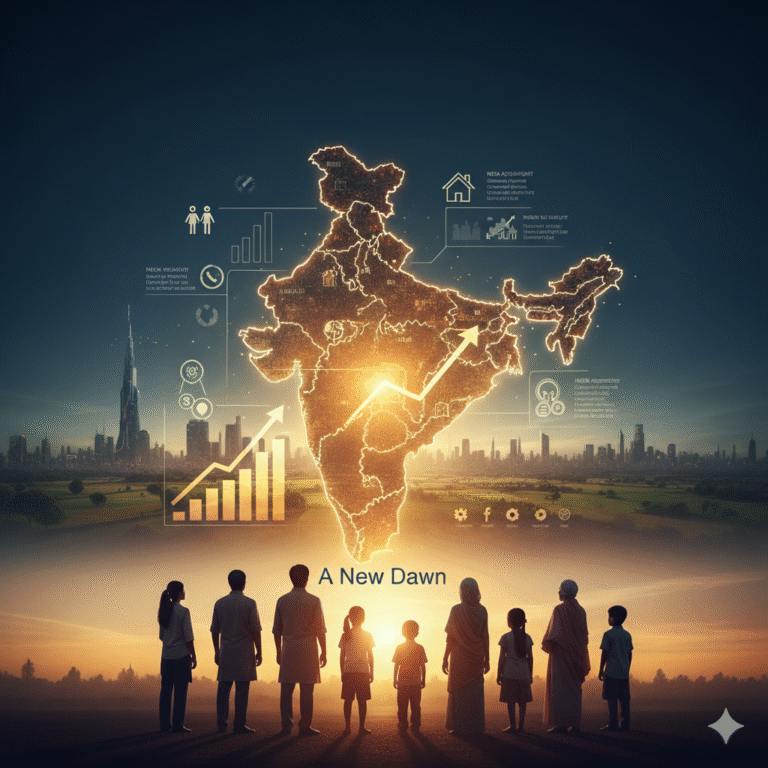
+ There are no comments
Add yours